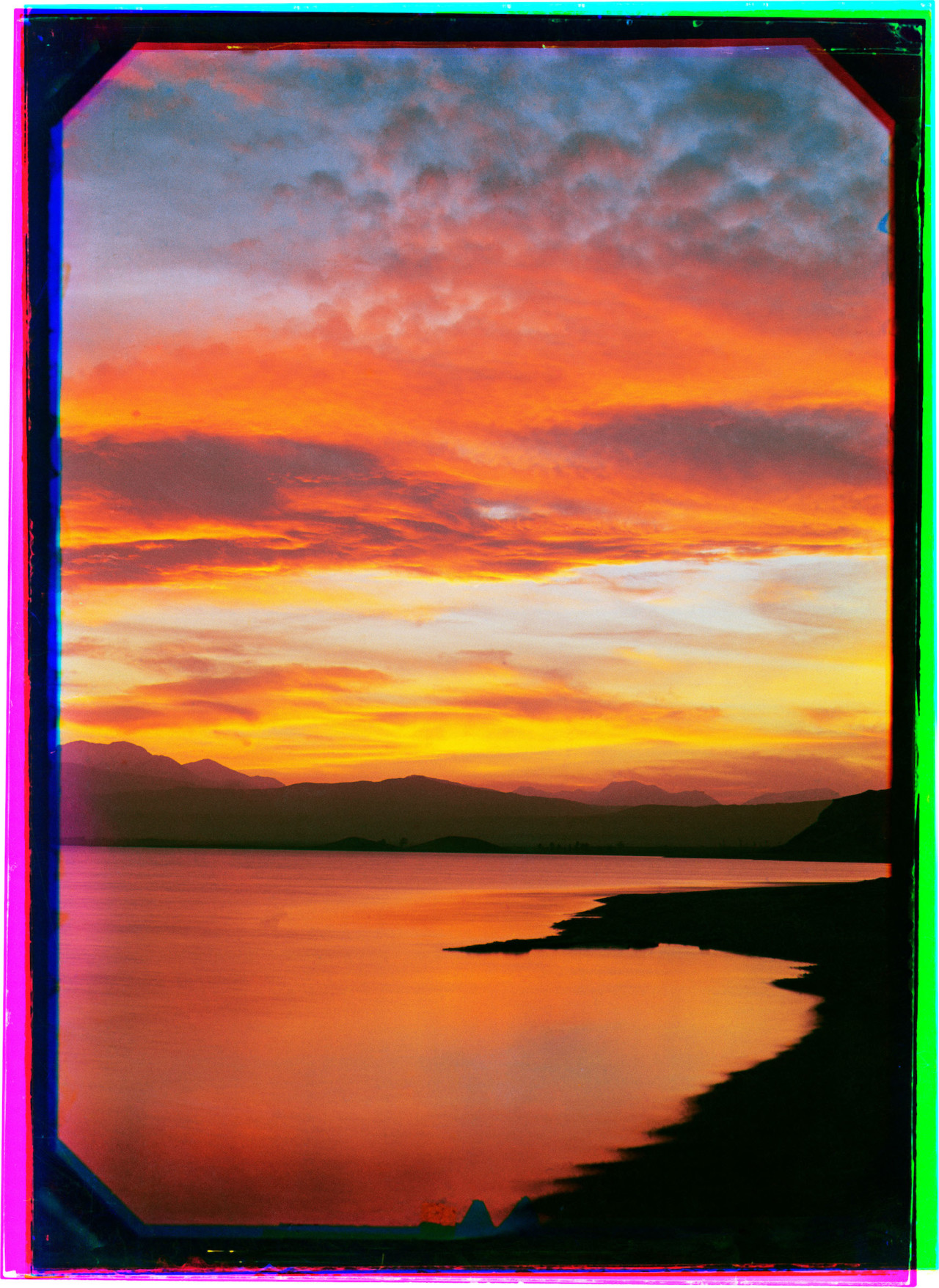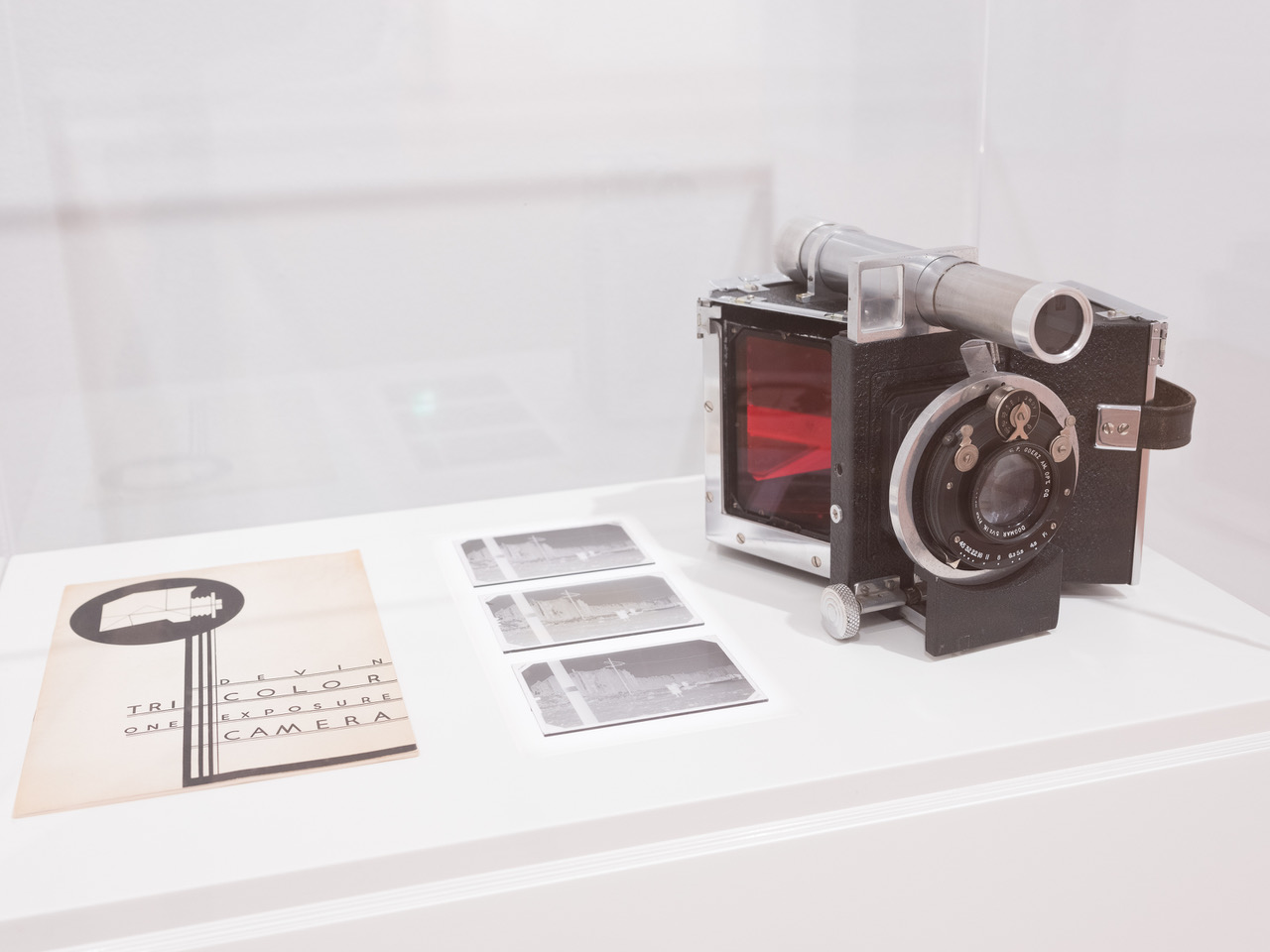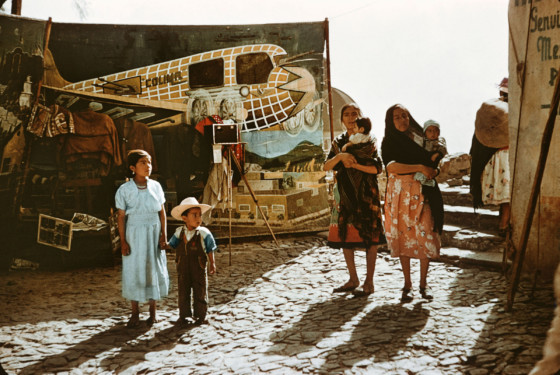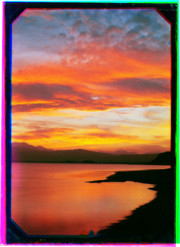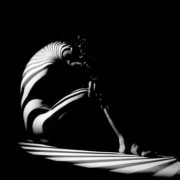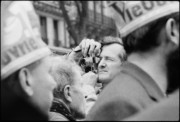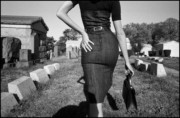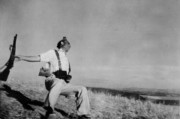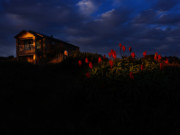Werner Bischof in Color
A new book and exhibition explores the pioneering early work of the Swiss photographer, focusing on his largely unseen color images, rediscovered by his son Marco. Interview by Colin Pantall.
What is the coolest camera used by a Magnum photographer? It could be one of the early Leicas favored by Henri Cartier-Bresson and many others, or the Contax II rangefinder Robert Capa took to capture the D-Day landings on Omaha Beach. Perhaps it’s one of the large-format cameras still used by Alec Soth or Olivia Arthur; or maybe the bellowed majesty of Martin Parr’s Makina Plaubel 55mm fixed-lens camera, with which he shot The Last Resort.
It could be any of those, but it’s not. Instead, step forward the Devin Tricolor. A beast of a camera, it was launched in the 1930s, and it shoots three black-and-white glass negatives simultaneously: one shot through a red filter, one through a green filter, and one through a blue filter.
Take those three negatives to the darkroom, print carefully using filters again, and you get the most sumptuous color images possible. It’s a camera that was used by the giants of commercial and portrait photography such as Nickolas Muray (he made his famous images of Frida Kahlo using this camera), George Burrell, and Madame Yevonde.
It was also used by Magnum photographer Werner Bischof, and it is the images made with this camera that form the heart of his latest exhibition, Unseen Colour, at MASI Lugano in his native Switzerland, which is accompanied by a new book available in the Magnum shop.
Marco Bischof, the son of Werner and director of his archive, explained to me why these images had remained unseen until now. “There are 60,000 negatives in the archive. I was busy with the classic black-and-white negatives so was not so keen on color. And these are glass negatives. They’re much more fragile. They’re difficult to print, so I left them on one side.
“But then I kept seeing that there were three of the same picture. I asked myself, ‘Why did he take three pictures of the same thing?’” That’s when Bischof Junior became interested in the Devin Tricolor Camera, and how it overlapped with the first part of his father’s photographic journey.
“In 1939 my father went to Paris because he wanted to become a painter. It was part of his fascination with color. The war broke out and he had to go back to Switzerland. This camera had been on his wish list, but was too expensive. Then he met people from Conzett & Huber, the Swiss printers of Du magazine. The now legendary magazine was first published to show the printing prowess of Conzett and Huber, and in particular printing techniques that could highlight the new color processes developing in photography.”
That’s where Bischof came in.
“He got very close to them. He worked with them, and they bought this camera for him to use when he wanted to. My father began to photograph with this camera in 1939. For six years he worked in his studio as well as doing Swiss military service. He did his experiments, and he had to make a living, so he did fashion photography, he did advertising. For me, it was amazing that he made these fragile, sensitive images while the war raged around Switzerland.”
Bischof’s early images show the influences of brilliant color photographers such as Erwin Blumenfeld. There are experiments with gels, with still life, with the photographs he needed to make to earn a living. There are pictures of workers, of cats, and of polar bears in Zurich Zoo.
"It wasn’t a camera for street photography. You had to think about what you wanted to photograph."
-
And then the war ended. Bischof left the relative comfort of Switzerland to photograph the destruction and chaos of post-war Europe. And he took his Devin camera with him
“The Devin Tricolor was promoted as being a handheld camera, like a Rollei or a Leica, but really it wasn’t. The light comes through the lens, it has two semi-transparent mirrors with the red, blue, and green filters in front of the three black-and-white negatives. And the film was slower, so you could only take pictures of things that were quite static. Each time you had to load or unload the camera, you had to use a changing bag and change three negatives.
“It wasn’t a camera for street photography. You had to think about what you wanted to photograph. The advantage was the high resolution and the amazing color.”
Using this camera, Bischof made color images of the destruction in Dresden, Cologne and Berlin – defining images on the defeat of Germany and its ruins. His images of Greece and the Acropolis show the country experiencing a window of peace before it is devastated by civil war.
His picture of a young Dutch boy in the Netherlands was chosen as a cover image for Du in May 1946. It shows a boy in the village of Roermond, his face pock-marked by shrapnel from a booby-trap left behind by retreating Germans. One eye is made of glass, and his frozen face bears the marks of psychological as well as physical trauma.
The boy is named Jo Corbey (you can read more about the image and the story here) and, at the time, the color somehow made his presence closer in time than a black-and-white image would. The use of the image on the cover of Du caused controversy when it was published in Switzerland, but somehow, even now, that color makes Jo Corbey profoundly present, and serves as a reminder of the futility and cruelty of war.
“After I realized the three black-and-white negatives made color images, I started to work with a scanning specialist who put them into the right channels and made the color corrections,” says Marco Bischof. “We had to interpret these colors because none of us had been with Werner at the time. But we had the copies of Du magazine, and that’s what we used to make the prints used in the exhibition. We went through around 20 different interpretations before we were happy.
“The colored edges are from the uncropped images weren’t shown that way originally, but I felt – when we did the scanning and printing – that it gives a special feeling for the picture, in the same way a Polaroid does. It gives them a photographic identity – that they come from a Devin camera.”
There are further images in the exhibition from Bischof’s later travels in Asia and South America, photographed with Rollei and Leica cameras. We see the last days of French colonial rule in Indochina, the beginnings of the postwar economic transition in Japan, and then his final images from Mexico and Peru. The last image in the exhibition shows the ruins of Machu Pichu.
On May 16, 1954, the station wagon that Bischof was traveling in crashed off a hillside in the Peruvian Andes. The 38-year-old was announced dead. It was a terrible time for the young Magnum agency as, less than a fortnight later, on May 25, founding member Robert Capa was killed in Indochina.
“He died so young,” says his son, Marco. “Who knows what he would have achieved if he had lived.”
Bischof’s legacy is apparent in his black-and-white photographs, but also in these newly discovered color images. “It was very exciting for me to find these pictures because, after so many years, we found something to do with my father’s legacy that was completely new.
“We show the prints without glass, which makes them closer to the viewer. The Devin color photographs seal the legacy of Werner Bischof. It gives a new dimension to the idea of him being a classic black-and-white photographer of the 20th century.”
An accompanying catalogue is available, published by Edizioni Casagrande. It is available here.


